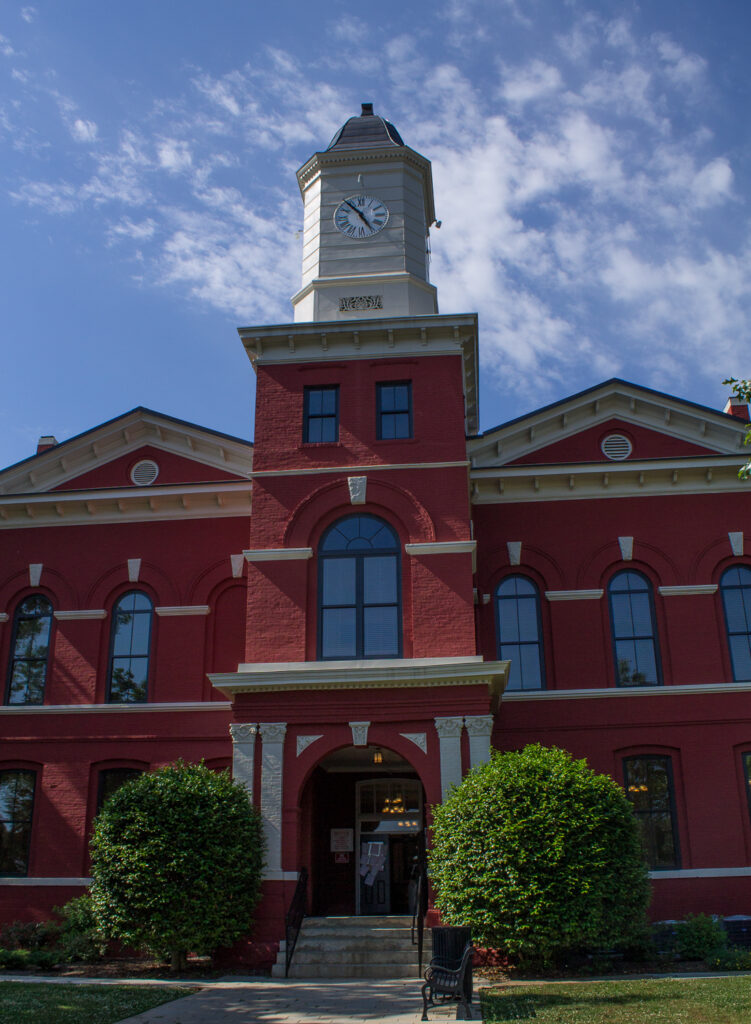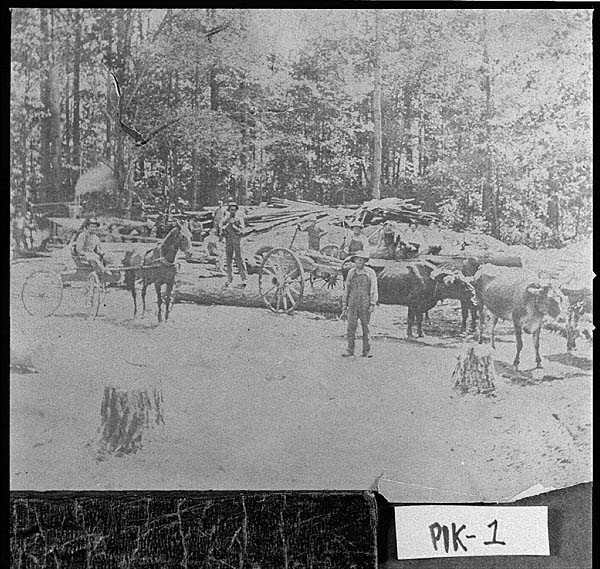In 1822 Pike County, the state’s fifty-sixth county, was created from Monroe County in west central Georgia by the state legislature. Later, parts of Pike County were used to create Upson (1824), Spalding (1851), and Lamar (1920) counties.
Pike County, which comprises 218 square miles, and its county seat, Zebulon, are named after Zebulon Pike, a general in the War of 1812 (1812-15) and an explorer of the Louisiana Territory. Pike’s name was made famous by his discovery of a Colorado mountain, subsequently named Pikes Peak.
Zebulon was incorporated in 1825, and a two-story wood-frame building was constructed to serve as a courthouse. This building served the county until 1844, when a brick building in the “Greek Temple” style replaced it. This structure was, in turn, replaced by the present courthouse in 1895. Other incorporated towns in Pike County are Concord, Meansville, Molena, and Williamson.

Early white settlers to the area used Indian trails in lieu of roads, but in the 1830s they improved the main trail by laying down planks that could support stagecoaches. This route became known as the Old Plank Road. Another old stagecoach line in Pike County came from Columbus, traversed Pike County up to Indian Springs, and then continued to Augusta. This was known as the Old Alabama Road.
Agricultural and forest products have traditionally been the economic mainstay in Pike County. Early crops were cotton and peaches. Later, poultry and soybeans became important farm products as well. Beginning in the 1970s, the county emerged as one of metropolitan Atlanta’s bedroom communities.

Notable residents include Charles Barrett, a founder of the Georgia Farmers Union and longtime president of the National Farmers Union, and Jacques Futrelle, a novelist, journalist, and writer of detective fiction who died in the sinking of the Titanic.
According to the 2020 U.S. census, the population of Pike County was 18,889.







